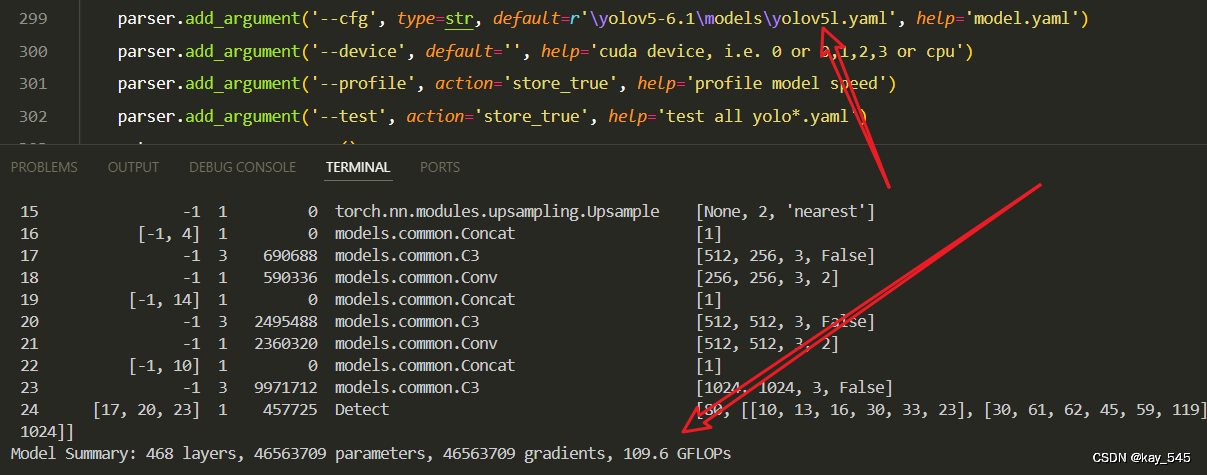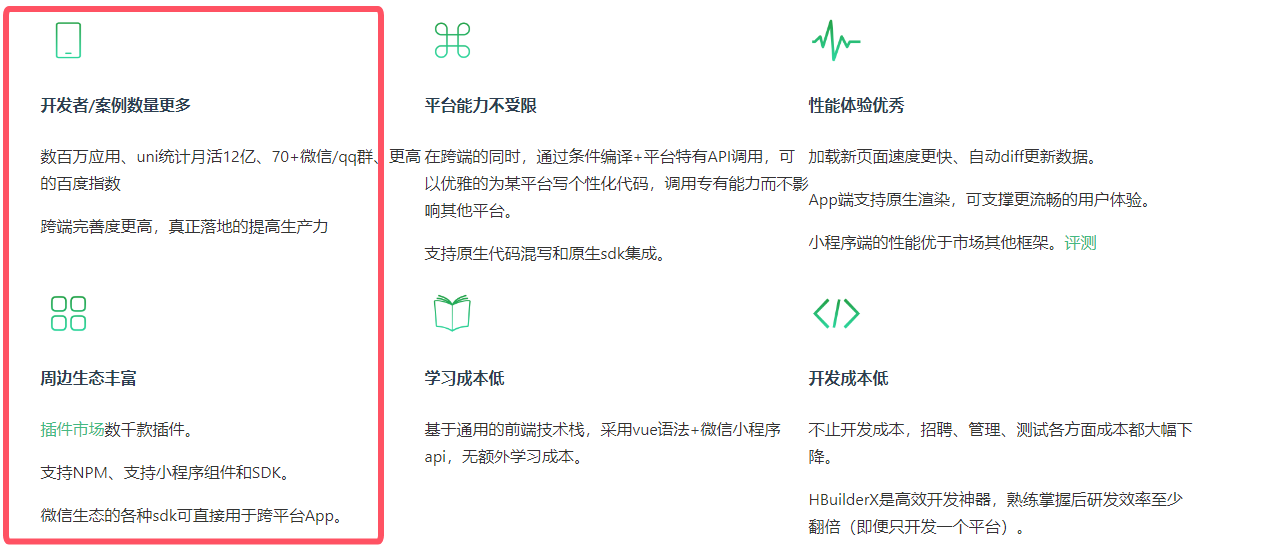秋招面试专栏推荐 :深度学习算法工程师面试问题总结【百面算法工程师】——点击即可跳转
💡💡💡本专栏所有程序均经过测试,可成功执行💡💡💡
专栏目录 :《YOLOv5入门 + 改进涨点》专栏介绍 & 专栏目录 |目前已有80+篇内容,内含各种Head检测头、损失函数Loss、Backbone、Neck、NMS等创新点改进
结构重参数化技术在计算机视觉领域日益受到重视,它能在不增加推理成本的情况下提升深度学习模型性能。本文将介绍了一种C2f融合REPVGGOREPA的方法,通过将复杂训练模块简化为单次卷积来降低训练成本。能显著减少内存消耗和加快训练速度。文章在介绍主要的原理后,将手把手教学如何进行模块的代码添加和修改,并将修改后的完整代码放在文章的最后,方便大家一键运行,小白也可轻松上手实践。以帮助您更好地学习深度学习目标检测YOLO系列的挑战。
专栏地址: YOLOv5改进+入门——持续更新各种有效涨点方法 点击即可跳转
目录
1. 原理
2. 将C3_REPVGGOREPA添加到yolov5网络中
2.1 C3_REPVGGOREPA代码实现
2.2 C3_REPVGGOREPA的神经网络模块代码解析
2.3 新增yaml文件
2.4 注册模块
2.5 执行程序
3. 完整代码分享
4. GFLOPs
5. 进阶
6. 总结
1. 原理

论文地址:Online Convolutional Re-parameterization——点击即可跳转
官方代码:官方代码仓库——点击即可跳转
REPVGG和OREPA的主要原理可以概括为结构重参数化的应用与优化。以下是两者的主要原理解释:
1. REPVGG的原理
REPVGG是一种基于VGG的卷积神经网络,应用了结构重参数化(Structural Re-parameterization)的概念。具体来说,它在训练阶段使用复杂的多分支结构以提升模型的表现力,而在推理阶段,将这些复杂的结构整合为一个简单的VGG-like卷积块,从而在保持高精度的同时提高了推理效率。这种方法在训练阶段引入了更多的计算成本,但通过在推理阶段将这些成本“折叠”成一个简单的结构,从而在推理时保持较高的效率。
2. OREPA的原理
OREPA(Online Convolutional Re-parameterization)是对传统结构重参数化方法的改进。它主要通过以下方式优化了训练效率:
-
在线重参数化(Online Re-parameterization):OREPA在训练过程中简化了复杂的训练结构,通过去除非线性层(如Batch Normalization),引入线性缩放层来替代,从而在保持多分支优化方向的多样性的同时,实现了在线的结构简化。
-
块压缩(Block Squeezing):在OREPA中,经过线性化后的块可以在训练过程中被压缩为单个卷积核,从而显著减少训练时的计算和存储开销。这使得OREPA在保持高精度的同时,能够显著提高训练效率并降低显存占用。
主要区别
-
结构设计:REPVGG的多分支结构在训练阶段引入了更高的计算复杂度,而OREPA通过去除非线性层并引入线性缩放层,使得其训练时的计算开销大大降低。
-
训练成本:REPVGG的训练成本较高,而OREPA通过在线重参数化和块压缩,显著降低了训练成本。
总结来说,OREPA通过优化结构重参数化过程中的训练效率,保留了高效的推理能力,并能够在各种计算机视觉任务中提供一致的性能提升。
2. 将C3_REPVGGOREPA添加到yolov5网络中
2.1 C3_REPVGGOREPA代码实现
关键步骤一: 将下面的代码粘贴到\yolov5\models\common.py中
import torch, math
import torch.nn as nn
import torch.nn.init as init
import torch.nn.functional as F
import numpy as np
class SEAttention(nn.Module):
def __init__(self, channel=512,reduction=16):
super().__init__()
self.avg_pool = nn.AdaptiveAvgPool2d(1)
self.fc = nn.Sequential(
nn.Linear(channel, channel // reduction, bias=False),
nn.ReLU(inplace=True),
nn.Linear(channel // reduction, channel, bias=False),
nn.Sigmoid()
)
def init_weights(self):
for m in self.modules():
if isinstance(m, nn.Conv2d):
init.kaiming_normal_(m.weight, mode='fan_out')
if m.bias is not None:
init.constant_(m.bias, 0)
elif isinstance(m, nn.BatchNorm2d):
init.constant_(m.weight, 1)
init.constant_(m.bias, 0)
elif isinstance(m, nn.Linear):
init.normal_(m.weight, std=0.001)
if m.bias is not None:
init.constant_(m.bias, 0)
def forward(self, x):
b, c, _, _ = x.size()
y = self.avg_pool(x).view(b, c)
y = self.fc(y).view(b, c, 1, 1)
return x * y.expand_as(x)
def transI_fusebn(kernel, bn):
gamma = bn.weight
std = (bn.running_var + bn.eps).sqrt()
return kernel * ((gamma / std).reshape(-1, 1, 1, 1)), bn.bias - bn.running_mean * gamma / std
def transVI_multiscale(kernel, target_kernel_size):
H_pixels_to_pad = (target_kernel_size - kernel.size(2)) // 2
W_pixels_to_pad = (target_kernel_size - kernel.size(3)) // 2
return F.pad(kernel, [W_pixels_to_pad, W_pixels_to_pad, H_pixels_to_pad, H_pixels_to_pad])
class OREPA(nn.Module):
def __init__(self,
in_channels,
out_channels,
kernel_size=3,
stride=1,
padding=None,
groups=1,
dilation=1,
act=True,
internal_channels_1x1_3x3=None,
deploy=False,
single_init=False,
weight_only=False,
init_hyper_para=1.0, init_hyper_gamma=1.0):
super(OREPA, self).__init__()
self.deploy = deploy
self.nonlinear = Conv.default_act if act is True else act if isinstance(act, nn.Module) else nn.Identity()
self.weight_only = weight_only
self.kernel_size = kernel_size
self.in_channels = in_channels
self.out_channels = out_channels
self.groups = groups
self.stride = stride
padding = autopad(kernel_size, padding, dilation)
self.padding = padding
self.dilation = dilation
if deploy:
self.orepa_reparam = nn.Conv2d(in_channels=in_channels, out_channels=out_channels, kernel_size=kernel_size, stride=stride,
padding=padding, dilation=dilation, groups=groups, bias=True)
else:
self.branch_counter = 0
self.weight_orepa_origin = nn.Parameter(torch.Tensor(out_channels, int(in_channels / self.groups), kernel_size, kernel_size))
init.kaiming_uniform_(self.weight_orepa_origin, a=math.sqrt(0.0))
self.branch_counter += 1
self.weight_orepa_avg_conv = nn.Parameter(
torch.Tensor(out_channels, int(in_channels / self.groups), 1,
1))
self.weight_orepa_pfir_conv = nn.Parameter(
torch.Tensor(out_channels, int(in_channels / self.groups), 1,
1))
init.kaiming_uniform_(self.weight_orepa_avg_conv, a=0.0)
init.kaiming_uniform_(self.weight_orepa_pfir_conv, a=0.0)
self.register_buffer(
'weight_orepa_avg_avg',
torch.ones(kernel_size,
kernel_size).mul(1.0 / kernel_size / kernel_size))
self.branch_counter += 1
self.branch_counter += 1
self.weight_orepa_1x1 = nn.Parameter(
torch.Tensor(out_channels, int(in_channels / self.groups), 1,
1))
init.kaiming_uniform_(self.weight_orepa_1x1, a=0.0)
self.branch_counter += 1
if internal_channels_1x1_3x3 is None:
internal_channels_1x1_3x3 = in_channels if groups <= 4 else 2 * in_channels
if internal_channels_1x1_3x3 == in_channels:
self.weight_orepa_1x1_kxk_idconv1 = nn.Parameter(
torch.zeros(in_channels, int(in_channels / self.groups), 1, 1))
id_value = np.zeros(
(in_channels, int(in_channels / self.groups), 1, 1))
for i in range(in_channels):
id_value[i, i % int(in_channels / self.groups), 0, 0] = 1
id_tensor = torch.from_numpy(id_value).type_as(
self.weight_orepa_1x1_kxk_idconv1)
self.register_buffer('id_tensor', id_tensor)
else:
self.weight_orepa_1x1_kxk_idconv1 = nn.Parameter(
torch.zeros(internal_channels_1x1_3x3,
int(in_channels / self.groups), 1, 1))
id_value = np.zeros(
(internal_channels_1x1_3x3, int(in_channels / self.groups), 1, 1))
for i in range(internal_channels_1x1_3x3):
id_value[i, i % int(in_channels / self.groups), 0, 0] = 1
id_tensor = torch.from_numpy(id_value).type_as(
self.weight_orepa_1x1_kxk_idconv1)
self.register_buffer('id_tensor', id_tensor)
#init.kaiming_uniform_(
#self.weight_orepa_1x1_kxk_conv1, a=math.sqrt(0.0))
self.weight_orepa_1x1_kxk_conv2 = nn.Parameter(
torch.Tensor(out_channels,
int(internal_channels_1x1_3x3 / self.groups),
kernel_size, kernel_size))
init.kaiming_uniform_(self.weight_orepa_1x1_kxk_conv2, a=math.sqrt(0.0))
self.branch_counter += 1
expand_ratio = 8
self.weight_orepa_gconv_dw = nn.Parameter(
torch.Tensor(in_channels * expand_ratio, 1, kernel_size,
kernel_size))
self.weight_orepa_gconv_pw = nn.Parameter(
torch.Tensor(out_channels, int(in_channels * expand_ratio / self.groups), 1, 1))
init.kaiming_uniform_(self.weight_orepa_gconv_dw, a=math.sqrt(0.0))
init.kaiming_uniform_(self.weight_orepa_gconv_pw, a=math.sqrt(0.0))
self.branch_counter += 1
self.vector = nn.Parameter(torch.Tensor(self.branch_counter, self.out_channels))
if weight_only is False:
self.bn = nn.BatchNorm2d(self.out_channels)
self.fre_init()
init.constant_(self.vector[0, :], 0.25 * math.sqrt(init_hyper_gamma)) #origin
init.constant_(self.vector[1, :], 0.25 * math.sqrt(init_hyper_gamma)) #avg
init.constant_(self.vector[2, :], 0.0 * math.sqrt(init_hyper_gamma)) #prior
init.constant_(self.vector[3, :], 0.5 * math.sqrt(init_hyper_gamma)) #1x1_kxk
init.constant_(self.vector[4, :], 1.0 * math.sqrt(init_hyper_gamma)) #1x1
init.constant_(self.vector[5, :], 0.5 * math.sqrt(init_hyper_gamma)) #dws_conv
self.weight_orepa_1x1.data = self.weight_orepa_1x1.mul(init_hyper_para)
self.weight_orepa_origin.data = self.weight_orepa_origin.mul(init_hyper_para)
self.weight_orepa_1x1_kxk_conv2.data = self.weight_orepa_1x1_kxk_conv2.mul(init_hyper_para)
self.weight_orepa_avg_conv.data = self.weight_orepa_avg_conv.mul(init_hyper_para)
self.weight_orepa_pfir_conv.data = self.weight_orepa_pfir_conv.mul(init_hyper_para)
self.weight_orepa_gconv_dw.data = self.weight_orepa_gconv_dw.mul(math.sqrt(init_hyper_para))
self.weight_orepa_gconv_pw.data = self.weight_orepa_gconv_pw.mul(math.sqrt(init_hyper_para))
if single_init:
# Initialize the vector.weight of origin as 1 and others as 0. This is not the default setting.
self.single_init()
def fre_init(self):
prior_tensor = torch.Tensor(self.out_channels, self.kernel_size,
self.kernel_size)
half_fg = self.out_channels / 2
for i in range(self.out_channels):
for h in range(3):
for w in range(3):
if i < half_fg:
prior_tensor[i, h, w] = math.cos(math.pi * (h + 0.5) *
(i + 1) / 3)
else:
prior_tensor[i, h, w] = math.cos(math.pi * (w + 0.5) *
(i + 1 - half_fg) / 3)
self.register_buffer('weight_orepa_prior', prior_tensor)
def weight_gen(self):
weight_orepa_origin = torch.einsum('oihw,o->oihw',
self.weight_orepa_origin,
self.vector[0, :])
weight_orepa_avg = torch.einsum('oihw,hw->oihw', self.weight_orepa_avg_conv, self.weight_orepa_avg_avg)
weight_orepa_avg = torch.einsum(
'oihw,o->oihw',
torch.einsum('oi,hw->oihw', self.weight_orepa_avg_conv.squeeze(3).squeeze(2),
self.weight_orepa_avg_avg), self.vector[1, :])
weight_orepa_pfir = torch.einsum(
'oihw,o->oihw',
torch.einsum('oi,ohw->oihw', self.weight_orepa_pfir_conv.squeeze(3).squeeze(2),
self.weight_orepa_prior), self.vector[2, :])
weight_orepa_1x1_kxk_conv1 = None
if hasattr(self, 'weight_orepa_1x1_kxk_idconv1'):
weight_orepa_1x1_kxk_conv1 = (self.weight_orepa_1x1_kxk_idconv1 +
self.id_tensor).squeeze(3).squeeze(2)
elif hasattr(self, 'weight_orepa_1x1_kxk_conv1'):
weight_orepa_1x1_kxk_conv1 = self.weight_orepa_1x1_kxk_conv1.squeeze(3).squeeze(2)
else:
raise NotImplementedError
weight_orepa_1x1_kxk_conv2 = self.weight_orepa_1x1_kxk_conv2
if self.groups > 1:
g = self.groups
t, ig = weight_orepa_1x1_kxk_conv1.size()
o, tg, h, w = weight_orepa_1x1_kxk_conv2.size()
weight_orepa_1x1_kxk_conv1 = weight_orepa_1x1_kxk_conv1.view(
g, int(t / g), ig)
weight_orepa_1x1_kxk_conv2 = weight_orepa_1x1_kxk_conv2.view(
g, int(o / g), tg, h, w)
weight_orepa_1x1_kxk = torch.einsum('gti,gothw->goihw',
weight_orepa_1x1_kxk_conv1,
weight_orepa_1x1_kxk_conv2).reshape(
o, ig, h, w)
else:
weight_orepa_1x1_kxk = torch.einsum('ti,othw->oihw',
weight_orepa_1x1_kxk_conv1,
weight_orepa_1x1_kxk_conv2)
weight_orepa_1x1_kxk = torch.einsum('oihw,o->oihw', weight_orepa_1x1_kxk, self.vector[3, :])
weight_orepa_1x1 = 0
if hasattr(self, 'weight_orepa_1x1'):
weight_orepa_1x1 = transVI_multiscale(self.weight_orepa_1x1,
self.kernel_size)
weight_orepa_1x1 = torch.einsum('oihw,o->oihw', weight_orepa_1x1,
self.vector[4, :])
weight_orepa_gconv = self.dwsc2full(self.weight_orepa_gconv_dw,
self.weight_orepa_gconv_pw,
self.in_channels, self.groups)
weight_orepa_gconv = torch.einsum('oihw,o->oihw', weight_orepa_gconv,
self.vector[5, :])
weight = weight_orepa_origin + weight_orepa_avg + weight_orepa_1x1 + weight_orepa_1x1_kxk + weight_orepa_pfir + weight_orepa_gconv
return weight
def dwsc2full(self, weight_dw, weight_pw, groups, groups_conv=1):
t, ig, h, w = weight_dw.size()
o, _, _, _ = weight_pw.size()
tg = int(t / groups)
i = int(ig * groups)
ogc = int(o / groups_conv)
groups_gc = int(groups / groups_conv)
weight_dw = weight_dw.view(groups_conv, groups_gc, tg, ig, h, w)
weight_pw = weight_pw.squeeze().view(ogc, groups_conv, groups_gc, tg)
weight_dsc = torch.einsum('cgtihw,ocgt->cogihw', weight_dw, weight_pw)
return weight_dsc.reshape(o, int(i/groups_conv), h, w)
def forward(self, inputs=None):
if hasattr(self, 'orepa_reparam'):
return self.nonlinear(self.orepa_reparam(inputs))
weight = self.weight_gen()
if self.weight_only is True:
return weight
out = F.conv2d(
inputs,
weight,
bias=None,
stride=self.stride,
padding=self.padding,
dilation=self.dilation,
groups=self.groups)
return self.nonlinear(self.bn(out))
def get_equivalent_kernel_bias(self):
return transI_fusebn(self.weight_gen(), self.bn)
def switch_to_deploy(self):
if hasattr(self, 'or1x1_reparam'):
return
kernel, bias = self.get_equivalent_kernel_bias()
self.orepa_reparam = nn.Conv2d(in_channels=self.in_channels, out_channels=self.out_channels,
kernel_size=self.kernel_size, stride=self.stride,
padding=self.padding, dilation=self.dilation, groups=self.groups, bias=True)
self.orepa_reparam.weight.data = kernel
self.orepa_reparam.bias.data = bias
for para in self.parameters():
para.detach_()
self.__delattr__('weight_orepa_origin')
self.__delattr__('weight_orepa_1x1')
self.__delattr__('weight_orepa_1x1_kxk_conv2')
if hasattr(self, 'weight_orepa_1x1_kxk_idconv1'):
self.__delattr__('id_tensor')
self.__delattr__('weight_orepa_1x1_kxk_idconv1')
elif hasattr(self, 'weight_orepa_1x1_kxk_conv1'):
self.__delattr__('weight_orepa_1x1_kxk_conv1')
else:
raise NotImplementedError
self.__delattr__('weight_orepa_avg_avg')
self.__delattr__('weight_orepa_avg_conv')
self.__delattr__('weight_orepa_pfir_conv')
self.__delattr__('weight_orepa_prior')
self.__delattr__('weight_orepa_gconv_dw')
self.__delattr__('weight_orepa_gconv_pw')
self.__delattr__('bn')
self.__delattr__('vector')
def init_gamma(self, gamma_value):
init.constant_(self.vector, gamma_value)
def single_init(self):
self.init_gamma(0.0)
init.constant_(self.vector[0, :], 1.0)
class OREPA_LargeConv(nn.Module):
def __init__(self, in_channels, out_channels, kernel_size=1,
stride=1, padding=None, groups=1, dilation=1, act=True, deploy=False):
super(OREPA_LargeConv, self).__init__()
assert kernel_size % 2 == 1 and kernel_size > 3
padding = autopad(kernel_size, padding, dilation)
self.stride = stride
self.padding = padding
self.layers = int((kernel_size - 1) / 2)
self.groups = groups
self.dilation = dilation
self.kernel_size = kernel_size
self.in_channels = in_channels
self.out_channels = out_channels
internal_channels = out_channels
self.nonlinear = Conv.default_act if act is True else act if isinstance(act, nn.Module) else nn.Identity()
if deploy:
self.or_large_reparam = nn.Conv2d(in_channels=in_channels, out_channels=out_channels, kernel_size=kernel_size, stride=stride,
padding=padding, dilation=dilation, groups=groups, bias=True)
else:
for i in range(self.layers):
if i == 0:
self.__setattr__('weight'+str(i), OREPA(in_channels, internal_channels, kernel_size=3, stride=1, padding=1, groups=groups, weight_only=True))
elif i == self.layers - 1:
self.__setattr__('weight'+str(i), OREPA(internal_channels, out_channels, kernel_size=3, stride=self.stride, padding=1, weight_only=True))
else:
self.__setattr__('weight'+str(i), OREPA(internal_channels, internal_channels, kernel_size=3, stride=1, padding=1, weight_only=True))
self.bn = nn.BatchNorm2d(out_channels)
#self.unfold = torch.nn.Unfold(kernel_size=3, dilation=1, padding=2, stride=1)
def weight_gen(self):
weight = getattr(self, 'weight'+str(0)).weight_gen().transpose(0, 1)
for i in range(self.layers - 1):
weight2 = getattr(self, 'weight'+str(i+1)).weight_gen()
weight = F.conv2d(weight, weight2, groups=self.groups, padding=2)
return weight.transpose(0, 1)
'''
weight = getattr(self, 'weight'+str(0))(inputs=None).transpose(0, 1)
for i in range(self.layers - 1):
weight = self.unfold(weight)
weight2 = getattr(self, 'weight'+str(i+1))(inputs=None)
weight = torch.einsum('akl,bk->abl', weight, weight2.view(weight2.size(0), -1))
k = i * 2 + 5
weight = weight.view(weight.size(0), weight.size(1), k, k)
return weight.transpose(0, 1)
'''
def forward(self, inputs):
if hasattr(self, 'or_large_reparam'):
return self.nonlinear(self.or_large_reparam(inputs))
weight = self.weight_gen()
out = F.conv2d(inputs, weight, stride=self.stride, padding=self.padding, dilation=self.dilation, groups=self.groups)
return self.nonlinear(self.bn(out))
def get_equivalent_kernel_bias(self):
return transI_fusebn(self.weight_gen(), self.bn)
def switch_to_deploy(self):
if hasattr(self, 'or_large_reparam'):
return
kernel, bias = self.get_equivalent_kernel_bias()
self.or_large_reparam = nn.Conv2d(in_channels=self.in_channels, out_channels=self.out_channels,
kernel_size=self.kernel_size, stride=self.stride,
padding=self.padding, dilation=self.dilation, groups=self.groups, bias=True)
self.or_large_reparam.weight.data = kernel
self.or_large_reparam.bias.data = bias
for para in self.parameters():
para.detach_()
for i in range(self.layers):
self.__delattr__('weight'+str(i))
self.__delattr__('bn')
class ConvBN(nn.Module):
def __init__(self, in_channels, out_channels, kernel_size,
stride=1, padding=0, dilation=1, groups=1, deploy=False, nonlinear=None):
super().__init__()
if nonlinear is None:
self.nonlinear = nn.Identity()
else:
self.nonlinear = nonlinear
if deploy:
self.conv = nn.Conv2d(in_channels=in_channels, out_channels=out_channels, kernel_size=kernel_size,
stride=stride, padding=padding, dilation=dilation, groups=groups, bias=True)
else:
self.conv = nn.Conv2d(in_channels=in_channels, out_channels=out_channels, kernel_size=kernel_size,
stride=stride, padding=padding, dilation=dilation, groups=groups, bias=False)
self.bn = nn.BatchNorm2d(num_features=out_channels)
def forward(self, x):
if hasattr(self, 'bn'):
return self.nonlinear(self.bn(self.conv(x)))
else:
return self.nonlinear(self.conv(x))
def switch_to_deploy(self):
kernel, bias = transI_fusebn(self.conv.weight, self.bn)
conv = nn.Conv2d(in_channels=self.conv.in_channels, out_channels=self.conv.out_channels, kernel_size=self.conv.kernel_size,
stride=self.conv.stride, padding=self.conv.padding, dilation=self.conv.dilation, groups=self.conv.groups, bias=True)
conv.weight.data = kernel
conv.bias.data = bias
for para in self.parameters():
para.detach_()
self.__delattr__('conv')
self.__delattr__('bn')
self.conv = conv
class OREPA_3x3_RepVGG(nn.Module):
def __init__(self, in_channels, out_channels, kernel_size,
stride=1, padding=None, groups=1, dilation=1, act=True,
internal_channels_1x1_3x3=None,
deploy=False):
super(OREPA_3x3_RepVGG, self).__init__()
self.deploy = deploy
self.nonlinear = Conv.default_act if act is True else act if isinstance(act, nn.Module) else nn.Identity()
self.kernel_size = kernel_size
self.in_channels = in_channels
self.out_channels = out_channels
self.groups = groups
padding = autopad(kernel_size, padding, dilation)
assert padding == kernel_size // 2
self.stride = stride
self.padding = padding
self.dilation = dilation
self.branch_counter = 0
self.weight_rbr_origin = nn.Parameter(torch.Tensor(out_channels, int(in_channels/self.groups), kernel_size, kernel_size))
init.kaiming_uniform_(self.weight_rbr_origin, a=math.sqrt(1.0))
self.branch_counter += 1
if groups < out_channels:
self.weight_rbr_avg_conv = nn.Parameter(torch.Tensor(out_channels, int(in_channels/self.groups), 1, 1))
self.weight_rbr_pfir_conv = nn.Parameter(torch.Tensor(out_channels, int(in_channels/self.groups), 1, 1))
init.kaiming_uniform_(self.weight_rbr_avg_conv, a=1.0)
init.kaiming_uniform_(self.weight_rbr_pfir_conv, a=1.0)
self.weight_rbr_avg_conv.data
self.weight_rbr_pfir_conv.data
self.register_buffer('weight_rbr_avg_avg', torch.ones(kernel_size, kernel_size).mul(1.0/kernel_size/kernel_size))
self.branch_counter += 1
else:
raise NotImplementedError
self.branch_counter += 1
if internal_channels_1x1_3x3 is None:
internal_channels_1x1_3x3 = in_channels if groups < out_channels else 2 * in_channels # For mobilenet, it is better to have 2X internal channels
if internal_channels_1x1_3x3 == in_channels:
self.weight_rbr_1x1_kxk_idconv1 = nn.Parameter(torch.zeros(in_channels, int(in_channels/self.groups), 1, 1))
id_value = np.zeros((in_channels, int(in_channels/self.groups), 1, 1))
for i in range(in_channels):
id_value[i, i % int(in_channels/self.groups), 0, 0] = 1
id_tensor = torch.from_numpy(id_value).type_as(self.weight_rbr_1x1_kxk_idconv1)
self.register_buffer('id_tensor', id_tensor)
else:
self.weight_rbr_1x1_kxk_conv1 = nn.Parameter(torch.Tensor(internal_channels_1x1_3x3, int(in_channels/self.groups), 1, 1))
init.kaiming_uniform_(self.weight_rbr_1x1_kxk_conv1, a=math.sqrt(1.0))
self.weight_rbr_1x1_kxk_conv2 = nn.Parameter(torch.Tensor(out_channels, int(internal_channels_1x1_3x3/self.groups), kernel_size, kernel_size))
init.kaiming_uniform_(self.weight_rbr_1x1_kxk_conv2, a=math.sqrt(1.0))
self.branch_counter += 1
expand_ratio = 8
self.weight_rbr_gconv_dw = nn.Parameter(torch.Tensor(in_channels*expand_ratio, 1, kernel_size, kernel_size))
self.weight_rbr_gconv_pw = nn.Parameter(torch.Tensor(out_channels, in_channels*expand_ratio, 1, 1))
init.kaiming_uniform_(self.weight_rbr_gconv_dw, a=math.sqrt(1.0))
init.kaiming_uniform_(self.weight_rbr_gconv_pw, a=math.sqrt(1.0))
self.branch_counter += 1
if out_channels == in_channels and stride == 1:
self.branch_counter += 1
self.vector = nn.Parameter(torch.Tensor(self.branch_counter, self.out_channels))
self.bn = nn.BatchNorm2d(out_channels)
self.fre_init()
init.constant_(self.vector[0, :], 0.25) #origin
init.constant_(self.vector[1, :], 0.25) #avg
init.constant_(self.vector[2, :], 0.0) #prior
init.constant_(self.vector[3, :], 0.5) #1x1_kxk
init.constant_(self.vector[4, :], 0.5) #dws_conv
def fre_init(self):
prior_tensor = torch.Tensor(self.out_channels, self.kernel_size, self.kernel_size)
half_fg = self.out_channels/2
for i in range(self.out_channels):
for h in range(3):
for w in range(3):
if i < half_fg:
prior_tensor[i, h, w] = math.cos(math.pi*(h+0.5)*(i+1)/3)
else:
prior_tensor[i, h, w] = math.cos(math.pi*(w+0.5)*(i+1-half_fg)/3)
self.register_buffer('weight_rbr_prior', prior_tensor)
def weight_gen(self):
weight_rbr_origin = torch.einsum('oihw,o->oihw', self.weight_rbr_origin, self.vector[0, :])
weight_rbr_avg = torch.einsum('oihw,o->oihw', torch.einsum('oihw,hw->oihw', self.weight_rbr_avg_conv, self.weight_rbr_avg_avg), self.vector[1, :])
weight_rbr_pfir = torch.einsum('oihw,o->oihw', torch.einsum('oihw,ohw->oihw', self.weight_rbr_pfir_conv, self.weight_rbr_prior), self.vector[2, :])
weight_rbr_1x1_kxk_conv1 = None
if hasattr(self, 'weight_rbr_1x1_kxk_idconv1'):
weight_rbr_1x1_kxk_conv1 = (self.weight_rbr_1x1_kxk_idconv1 + self.id_tensor).squeeze()
elif hasattr(self, 'weight_rbr_1x1_kxk_conv1'):
weight_rbr_1x1_kxk_conv1 = self.weight_rbr_1x1_kxk_conv1.squeeze()
else:
raise NotImplementedError
weight_rbr_1x1_kxk_conv2 = self.weight_rbr_1x1_kxk_conv2
if self.groups > 1:
g = self.groups
t, ig = weight_rbr_1x1_kxk_conv1.size()
o, tg, h, w = weight_rbr_1x1_kxk_conv2.size()
weight_rbr_1x1_kxk_conv1 = weight_rbr_1x1_kxk_conv1.view(g, int(t/g), ig)
weight_rbr_1x1_kxk_conv2 = weight_rbr_1x1_kxk_conv2.view(g, int(o/g), tg, h, w)
weight_rbr_1x1_kxk = torch.einsum('gti,gothw->goihw', weight_rbr_1x1_kxk_conv1, weight_rbr_1x1_kxk_conv2).view(o, ig, h, w)
else:
weight_rbr_1x1_kxk = torch.einsum('ti,othw->oihw', weight_rbr_1x1_kxk_conv1, weight_rbr_1x1_kxk_conv2)
weight_rbr_1x1_kxk = torch.einsum('oihw,o->oihw', weight_rbr_1x1_kxk, self.vector[3, :])
weight_rbr_gconv = self.dwsc2full(self.weight_rbr_gconv_dw, self.weight_rbr_gconv_pw, self.in_channels)
weight_rbr_gconv = torch.einsum('oihw,o->oihw', weight_rbr_gconv, self.vector[4, :])
weight = weight_rbr_origin + weight_rbr_avg + weight_rbr_1x1_kxk + weight_rbr_pfir + weight_rbr_gconv
return weight
def dwsc2full(self, weight_dw, weight_pw, groups):
t, ig, h, w = weight_dw.size()
o, _, _, _ = weight_pw.size()
tg = int(t/groups)
i = int(ig*groups)
weight_dw = weight_dw.view(groups, tg, ig, h, w)
weight_pw = weight_pw.squeeze().view(o, groups, tg)
weight_dsc = torch.einsum('gtihw,ogt->ogihw', weight_dw, weight_pw)
return weight_dsc.view(o, i, h, w)
def forward(self, inputs):
weight = self.weight_gen()
out = F.conv2d(inputs, weight, bias=None, stride=self.stride, padding=self.padding, dilation=self.dilation, groups=self.groups)
return self.nonlinear(self.bn(out))
class RepVGGBlock_OREPA(nn.Module):
def __init__(self, in_channels, out_channels, kernel_size,
stride=1, padding=None, groups=1, dilation=1, act=True, deploy=False, use_se=False):
super(RepVGGBlock_OREPA, self).__init__()
self.deploy = deploy
self.groups = groups
self.in_channels = in_channels
self.out_channels = out_channels
padding = autopad(kernel_size, padding, dilation)
self.padding = padding
self.dilation = dilation
self.groups = groups
assert kernel_size == 3
assert padding == 1
self.nonlinearity = Conv.default_act if act is True else act if isinstance(act, nn.Module) else nn.Identity()
if use_se:
self.se = SEAttention(out_channels, reduction=out_channels // 16)
else:
self.se = nn.Identity()
if deploy:
self.rbr_reparam = nn.Conv2d(in_channels=in_channels, out_channels=out_channels, kernel_size=kernel_size, stride=stride,
padding=padding, dilation=dilation, groups=groups, bias=True)
else:
self.rbr_identity = nn.BatchNorm2d(num_features=in_channels) if out_channels == in_channels and stride == 1 else None
self.rbr_dense = OREPA_3x3_RepVGG(in_channels=in_channels, out_channels=out_channels, kernel_size=kernel_size, stride=stride, padding=padding, groups=groups, dilation=1)
self.rbr_1x1 = ConvBN(in_channels=in_channels, out_channels=out_channels, kernel_size=1, stride=stride, groups=groups, dilation=1)
def forward(self, inputs):
if hasattr(self, 'rbr_reparam'):
return self.nonlinearity(self.se(self.rbr_reparam(inputs)))
if self.rbr_identity is None:
id_out = 0
else:
id_out = self.rbr_identity(inputs)
out1 = self.rbr_dense(inputs)
out2 = self.rbr_1x1(inputs)
out3 = id_out
out = out1 + out2 + out3
return self.nonlinearity(self.se(out))
# Optional. This improves the accuracy and facilitates quantization.
# 1. Cancel the original weight decay on rbr_dense.conv.weight and rbr_1x1.conv.weight.
# 2. Use like this.
# loss = criterion(....)
# for every RepVGGBlock blk:
# loss += weight_decay_coefficient * 0.5 * blk.get_cust_L2()
# optimizer.zero_grad()
# loss.backward()
# Not used for OREPA
def get_custom_L2(self):
K3 = self.rbr_dense.weight_gen()
K1 = self.rbr_1x1.conv.weight
t3 = (self.rbr_dense.bn.weight / ((self.rbr_dense.bn.running_var + self.rbr_dense.bn.eps).sqrt())).reshape(-1, 1, 1, 1).detach()
t1 = (self.rbr_1x1.bn.weight / ((self.rbr_1x1.bn.running_var + self.rbr_1x1.bn.eps).sqrt())).reshape(-1, 1, 1, 1).detach()
l2_loss_circle = (K3 ** 2).sum() - (K3[:, :, 1:2, 1:2] ** 2).sum() # The L2 loss of the "circle" of weights in 3x3 kernel. Use regular L2 on them.
eq_kernel = K3[:, :, 1:2, 1:2] * t3 + K1 * t1 # The equivalent resultant central point of 3x3 kernel.
l2_loss_eq_kernel = (eq_kernel ** 2 / (t3 ** 2 + t1 ** 2)).sum() # Normalize for an L2 coefficient comparable to regular L2.
return l2_loss_eq_kernel + l2_loss_circle
def get_equivalent_kernel_bias(self):
kernel3x3, bias3x3 = self._fuse_bn_tensor(self.rbr_dense)
kernel1x1, bias1x1 = self._fuse_bn_tensor(self.rbr_1x1)
kernelid, biasid = self._fuse_bn_tensor(self.rbr_identity)
return kernel3x3 + self._pad_1x1_to_3x3_tensor(kernel1x1) + kernelid, bias3x3 + bias1x1 + biasid
def _pad_1x1_to_3x3_tensor(self, kernel1x1):
if kernel1x1 is None:
return 0
else:
return torch.nn.functional.pad(kernel1x1, [1,1,1,1])
def _fuse_bn_tensor(self, branch):
if branch is None:
return 0, 0
if not isinstance(branch, nn.BatchNorm2d):
if isinstance(branch, OREPA_3x3_RepVGG):
kernel = branch.weight_gen()
elif isinstance(branch, ConvBN):
kernel = branch.conv.weight
else:
raise NotImplementedError
running_mean = branch.bn.running_mean
running_var = branch.bn.running_var
gamma = branch.bn.weight
beta = branch.bn.bias
eps = branch.bn.eps
else:
if not hasattr(self, 'id_tensor'):
input_dim = self.in_channels // self.groups
kernel_value = np.zeros((self.in_channels, input_dim, 3, 3), dtype=np.float32)
for i in range(self.in_channels):
kernel_value[i, i % input_dim, 1, 1] = 1
self.id_tensor = torch.from_numpy(kernel_value).to(branch.weight.device)
kernel = self.id_tensor
running_mean = branch.running_mean
running_var = branch.running_var
gamma = branch.weight
beta = branch.bias
eps = branch.eps
std = (running_var + eps).sqrt()
t = (gamma / std).reshape(-1, 1, 1, 1)
return kernel * t, beta - running_mean * gamma / std
def switch_to_deploy(self):
if hasattr(self, 'rbr_reparam'):
return
kernel, bias = self.get_equivalent_kernel_bias()
self.rbr_reparam = nn.Conv2d(in_channels=self.rbr_dense.in_channels, out_channels=self.rbr_dense.out_channels,
kernel_size=self.rbr_dense.kernel_size, stride=self.rbr_dense.stride,
padding=self.rbr_dense.padding, dilation=self.rbr_dense.dilation, groups=self.rbr_dense.groups, bias=True)
self.rbr_reparam.weight.data = kernel
self.rbr_reparam.bias.data = bias
for para in self.parameters():
para.detach_()
self.__delattr__('rbr_dense')
self.__delattr__('rbr_1x1')
if hasattr(self, 'rbr_identity'):
self.__delattr__('rbr_identity')
class Bottleneck_REPVGGOREPA(Bottleneck):
"""Standard bottleneck with DCNV2."""
def __init__(self, c1, c2, shortcut=True, g=1, k=(3, 3), e=0.5): # ch_in, ch_out, shortcut, groups, kernels, expand
super().__init__(c1, c2, shortcut, g, k, e)
c_ = int(c2 * e) # hidden channels
if k[0] == 1:
self.cv1 = Conv(c1, c_, 1)
else:
self.cv1 = RepVGGBlock_OREPA(c1, c_, 3)
self.cv2 = RepVGGBlock_OREPA(c_, c2, 3, groups=g)
class C3_REPVGGOREPA(C3):
def __init__(self, c1, c2, n=1, shortcut=False, g=1, e=0.5):
super().__init__(c1, c2, n, shortcut, g, e)
c_ = int(c2 * e) # hidden channels
self.m = nn.Sequential(*(Bottleneck_REPVGGOREPA(c_, c_, shortcut, g, k=(1, 3), e=1.0) for _ in range(n)))2.2 C3_REPVGGOREPA的神经网络模块代码解析
C3_REPVGGOREPA 它继承自另一个类 C2f。以下是对该代码的详细解析:
1. 类的定义与继承
class C3_REPVGGOREPA(C3):-
C3_REPVGGOREPA继承自C3类,这意味着C3_REPVGGOREPA将拥有C3的所有属性和方法,但可以重写或扩展这些属性和方法。 -
C3是父类,它可能定义了一些基础的神经网络结构或功能。
2. 初始化方法
def __init__(self, c1, c2, n=1, shortcut=False, g=1, e=0.5):
super().__init__(c1, c2, n, shortcut, g, e)-
__init__是初始化方法,当创建C3_REPVGGOREPA类的实例时会自动调用。 -
c1和c2表示输入和输出的通道数,n表示模块重复的次数,shortcut是是否使用残差连接的标志,g是组卷积的组数,e可能表示扩展因子。 -
super().__init__(c1, c2, n, shortcut, g, e)调用了父类C3的初始化方法,确保C3_REPVGGOREPA继承父类的初始化逻辑。
3. 模块列表
self.m = nn.ModuleList(Bottleneck_REPVGGOREPA(self.c, self.c, shortcut, g, k=(3, 3), e=1.0) for _ in range(n))-
self.m是一个nn.ModuleList,用于存储一系列神经网络层或模块。 -
Bottleneck_REPVGGOREPA是一个自定义的模块(实现了REPVGG和OREPA方法的瓶颈层),每个模块的输入和输出通道数都是self.c,shortcut、g和k=(3, 3)是这个模块的参数,其中k=(3, 3)可能表示使用的卷积核大小为 3x3,e=1.0表示扩展因子。 -
for _ in range(n)表示创建n个Bottleneck_REPVGGOREPA模块并将它们添加到self.m中,n是初始化方法中的参数。
4. 总结
C3_REPVGGOREPA 类是一个自定义神经网络模块,继承自 C3。在这个类中,它使用了 Bottleneck_REPVGGOREPA 模块,并通过 nn.ModuleList 将多个这样的模块组合在一起。这种设计允许通过重复使用 Bottleneck_REPVGGOREPA 模块来构建更深的神经网络结构,同时继承并扩展了 C3 类的功能。

2.3 新增yaml文件
关键步骤二:在下/yolov5/models下新建文件 yolov5_C3_REPVGGOREPA.yaml并将下面代码复制进去
- 目标检测yaml文件
# Ultralytics YOLOv5 🚀, AGPL-3.0 license
# Parameters
nc: 80 # number of classes
depth_multiple: 1.0 # model depth multiple
width_multiple: 1.0 # layer channel multiple
anchors:
- [10, 13, 16, 30, 33, 23] # P3/8
- [30, 61, 62, 45, 59, 119] # P4/16
- [116, 90, 156, 198, 373, 326] # P5/32
# YOLOv5 v6.0 backbone
backbone:
# [from, number, module, args]
[
[-1, 1, Conv, [64, 6, 2, 2]], # 0-P1/2
[-1, 1, Conv, [128, 3, 2]], # 1-P2/4
[-1, 3, C3_REPVGGOREPA, [128]],
[-1, 1, Conv, [256, 3, 2]], # 3-P3/8
[-1, 6, C3_REPVGGOREPA, [256]],
[-1, 1, Conv, [512, 3, 2]], # 5-P4/16
[-1, 9, C3_REPVGGOREPA, [512]],
[-1, 1, Conv, [1024, 3, 2]], # 7-P5/32
[-1, 3, C3_REPVGGOREPA, [1024]],
[-1, 1, SPPF, [1024, 5]], # 9
]
# YOLOv5 v6.0 head
head: [
[-1, 1, Conv, [512, 1, 1]],
[-1, 1, nn.Upsample, [None, 2, "nearest"]],
[[-1, 6], 1, Concat, [1]], # cat backbone P4
[-1, 3, C3, [512, False]], # 13
[-1, 1, Conv, [256, 1, 1]],
[-1, 1, nn.Upsample, [None, 2, "nearest"]],
[[-1, 4], 1, Concat, [1]], # cat backbone P3
[-1, 3, C3, [256, False]], # 17 (P3/8-small)
[-1, 1, Conv, [256, 3, 2]],
[[-1, 14], 1, Concat, [1]], # cat head P4
[-1, 3, C3, [512, False]], # 20 (P4/16-medium)
[-1, 1, Conv, [512, 3, 2]],
[[-1, 10], 1, Concat, [1]], # cat head P5
[-1, 3, C3, [1024, False]], # 23 (P5/32-large)
[[17, 20, 23], 1, Detect, [nc, anchors]], # Detect(P3, P4, P5)
]
- 语义分割yaml文件
# Ultralytics YOLOv5 🚀, AGPL-3.0 license
# Parameters
nc: 80 # number of classes
depth_multiple: 1.0 # model depth multiple
width_multiple: 1.0 # layer channel multiple
anchors:
- [10, 13, 16, 30, 33, 23] # P3/8
- [30, 61, 62, 45, 59, 119] # P4/16
- [116, 90, 156, 198, 373, 326] # P5/32
# YOLOv5 v6.0 backbone
backbone:
# [from, number, module, args]
[
[-1, 1, Conv, [64, 6, 2, 2]], # 0-P1/2
[-1, 1, Conv, [128, 3, 2]], # 1-P2/4
[-1, 3, C3_REPVGGOREPA, [128]],
[-1, 1, Conv, [256, 3, 2]], # 3-P3/8
[-1, 6, C3_REPVGGOREPA, [256]],
[-1, 1, Conv, [512, 3, 2]], # 5-P4/16
[-1, 9, C3_REPVGGOREPA, [512]],
[-1, 1, Conv, [1024, 3, 2]], # 7-P5/32
[-1, 3, C3_REPVGGOREPA, [1024]],
[-1, 1, SPPF, [1024, 5]], # 9
]
# YOLOv5 v6.0 head
head: [
[-1, 1, Conv, [512, 1, 1]],
[-1, 1, nn.Upsample, [None, 2, "nearest"]],
[[-1, 6], 1, Concat, [1]], # cat backbone P4
[-1, 3, C3, [512, False]], # 13
[-1, 1, Conv, [256, 1, 1]],
[-1, 1, nn.Upsample, [None, 2, "nearest"]],
[[-1, 4], 1, Concat, [1]], # cat backbone P3
[-1, 3, C3, [256, False]], # 17 (P3/8-small)
[-1, 1, Conv, [256, 3, 2]],
[[-1, 14], 1, Concat, [1]], # cat head P4
[-1, 3, C3, [512, False]], # 20 (P4/16-medium)
[-1, 1, Conv, [512, 3, 2]],
[[-1, 10], 1, Concat, [1]], # cat head P5
[-1, 3, C3, [1024, False]], # 23 (P5/32-large)
[[17, 20, 23], 1, Segment, [nc, anchors, 32, 256]], # Segment (P3, P4, P5)
]
2.4 注册模块
关键步骤三:在yolo.py的parse_model函数替换添加C3_REPVGGOREPA

2.5 执行程序
在train.py中,将cfg的参数路径设置为yolov5_C3_REPVGGOREPA.yaml的路径
建议大家写绝对路径,确保一定能找到

🚀运行程序,如果出现下面的内容则说明添加成功🚀
from n params module arguments
0 -1 1 7040 models.common.Conv [3, 64, 6, 2, 2]
1 -1 1 73984 models.common.Conv [64, 128, 3, 2]
2 -1 3 802816 models.common.C3_REPVGGOREPA [128, 128, 3]
3 -1 1 295424 models.common.Conv [128, 256, 3, 2]
4 -1 6 6159360 models.common.C3_REPVGGOREPA [256, 256, 6]
5 -1 1 1180672 models.common.Conv [256, 512, 3, 2]
6 -1 9 36302848 models.common.C3_REPVGGOREPA [512, 512, 9]
7 -1 1 4720640 models.common.Conv [512, 1024, 3, 2]
8 -1 3 49545216 models.common.C3_REPVGGOREPA [1024, 1024, 3]
9 -1 1 2624512 models.common.SPPF [1024, 1024, 5]
10 -1 1 525312 models.common.Conv [1024, 512, 1, 1]
11 -1 1 0 torch.nn.modules.upsampling.Upsample [None, 2, 'nearest']
12 [-1, 6] 1 0 models.common.Concat [1]
13 -1 3 2757632 models.common.C3 [1024, 512, 3, False]
14 -1 1 131584 models.common.Conv [512, 256, 1, 1]
15 -1 1 0 torch.nn.modules.upsampling.Upsample [None, 2, 'nearest']
16 [-1, 4] 1 0 models.common.Concat [1]
17 -1 3 690688 models.common.C3 [512, 256, 3, False]
18 -1 1 590336 models.common.Conv [256, 256, 3, 2]
19 [-1, 14] 1 0 models.common.Concat [1]
20 -1 3 2495488 models.common.C3 [512, 512, 3, False]
21 -1 1 2360320 models.common.Conv [512, 512, 3, 2]
22 [-1, 10] 1 0 models.common.Concat [1]
23 -1 3 9971712 models.common.C3 [1024, 1024, 3, False]
24 [17, 20, 23] 1 457725 Detect [80, [[10, 13, 16, 30, 33, 23], [30, 61, 62, 45, 59, 119], [116, 90, 156, 198, 373, 326]], [256, 512, 1024]]
YOLOv5_C3_REPVGGOREPA summary: 620 layers, 121693309 parameters, 121693309 gradients, 74.8 GFLOPs3. 完整代码分享
https://pan.baidu.com/s/1zSOMTwR6U9tU0d-_ciMv6A?pwd=pftx提取码: pftx
4. GFLOPs
关于GFLOPs的计算方式可以查看:百面算法工程师 | 卷积基础知识——Convolution
未改进的GFLOPs

改进后的GFLOPs
手里的没有卡了,需要的同学自己测一下吧
5. 进阶
可以结合损失函数或者卷积模块进行多重改进
YOLOv5改进 | 损失函数 | EIoU、SIoU、WIoU、DIoU、FocuSIoU等多种损失函数——点击即可跳转
6. 总结
OREPA的主要原理在于通过在线卷积重参数化(Online Convolutional Re-parameterization)优化了传统结构重参数化方法的训练效率。在训练阶段,OREPA首先移除了复杂训练块中的非线性标准化层,替换为线性缩放层,从而保持了各分支优化方向的多样性,同时简化了结构。然后,OREPA将这些线性化的块在训练过程中进一步压缩为单个卷积核,从而显著降低了计算和存储开销。这一过程不仅大幅度减少了训练成本,还保留了模型的高表现力,使得在推理阶段能够实现高效且精准的模型部署。这种方法特别适用于需要在有限计算资源下执行的场景,如实时推理任务。



















